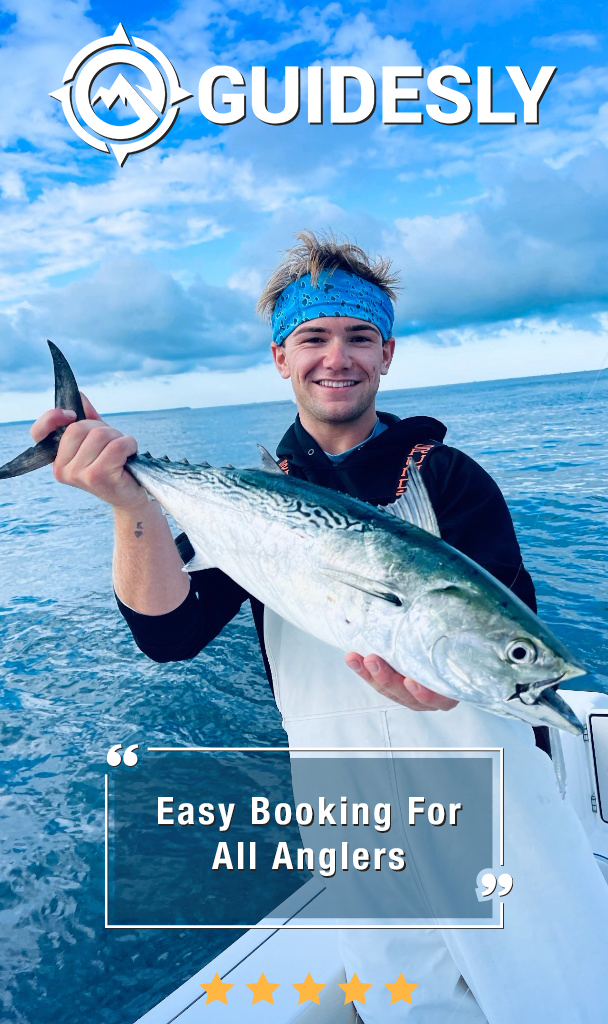Recreational Shark Fishing
Read this guide for all things recreational shark fishing - with tips on tackle and bait and where to target shark as well as best practices.

Recreational shark fishing is one of the most exciting fishing opportunities anglers can partake in. Many serious anglers consider the shark a much-coveted game fish for its thrill and challenge. It takes tremendous skill, deep knowledge, and stamina to target any shark species, so it’s not for the faint of heart.
The reality, though, is that many shark species have become subject to heavy fishing pressure through the years, resulting in the depletion of their population. So a significant component of shark fishing is practicing safe and responsible catch-and-release to help keep sharks in the ocean for generations to come.
With this article, we’ll learn all about recreational shark fishing. We’ll run down expert tips and techniques to help you hook a shark from the surf, from the jetty, or on a boat. In addition to these practical hacks, we’ll also go through the best practices every responsible shark angler should commit to when catching these trophies.

Recreational Shark Fishing Tips and Techniques

1. Shark Fishing Tackle
Responsible shark fishing starts with your choice of tackle. The first step for every shark angler is to link their fishing hook to a sturdy mainline leader with a wire leader. Other leader materials such as mono, braided line, or fluorocarbon are not advisable, as sharks can chew through these materials without effort. Another benefit to attaching your hook with a wire leader is that it allows you to take the hook out of your catch easily, helping you ensure that you’re not releasing your game fish with a hook still in its mouth.
Your choice of tackle will depend largely on the shark species you’re targeting and the spot from which you’re fishing. A good way to know for sure is to consult with the local tackle shops and get their recommendations. For example, if you’re surf fishing for small to medium-sized shark species, a good set would be a big surf spinning reel or a high-quality conventional reel with a drag rated 30lb or more. Equip your reel with a 40-80lb braided line and a minimum of 80 to 100lb mono rubbing and casting leader, then pair your setup with a 10-15ft spinning or conventional rod. If you’re on a boat or any structure, you’re most likely targeting a big shark, so using tackle that can sustain 40 to 100lb drag and 50 to 200lb braided line for your reels are your best bet. For heavy tackle, pair your set with a good fighting belt and harness to reduce your fight time with your fish, which is better for your shark.
The use of circle hooks is a requirement if you’re practicing proper catch-and-release. Circle hooks are designed to help ensure you’re not deep-hooking your fish, as they can only hook a catch by the mouth or lip corner. To make sure you’re not hurting your fish and yourself when unhooking your catch, you must use a proper unhooking tool and wear a pair of tough gloves, especially if you’re handling sharks with rough skin.
2. Shark Bait
Mackerel and bluefish are two of the most standard baits to catch a shark. The oilier the bait fish, the more attractive it is to sharks. An alternative to these two fish species is a bunker rigged on the lips, allowing a more accessible hook set.
One way to make your bluefish attractive to sharks is by presenting them as large bluefish fillets. Cutting them butterfly-style by removing the spine and the tail for mackerel makes for an easier hook-set.
Where to Target Shark
1. From The Surf
Marinas, reefs, and river mouths are some of the best spots to target sharks, as these are where their food congregates. Getting your timing right is a great way to guarantee many sharks in the area. Watch out for the tidal movement on your beach — shark species on the surf like big movements that carry their forage.

2. From Structure Such as Piers, Jetties, and Breakwaters
Fishing from structure requires a heavier rod and reel — a medium-heavy rated conventional tackle should do the trick. Because these structures tend to jut out into the deeper parts of the water, you can expect to hook some big fish. However, the challenge with fishing from these tall structures is practicing safe catch-and-release.
3. Deep Sea Fishing on a Charter Boat
The safest way to practice shark fishing offshore is by booking a fishing charter specializing in shark fishing, as they will be much more experienced and equipped. Deep sea fishing for sharks allows you to target big game fish such as mako shark, thresher shark, or blue shark. Targeting them with a chum bag filled with fish guts is exciting, but make sure it’s legal where you’re fishing.
Recreational Shark Fishing Best Practices
1. Secure the Right Permits
Recreational anglers looking to target shark must secure a federal fishing permit. For anglers fishing in the Atlantic, Gulf of Mexico, and the Caribbean Sea, for example, obtaining a Highly Migratory Species (HMS) permit issued by NOAA Fisheries is required. Check with the local authorities about which permits you to need to secure before heading out to fish for sharks.
2. Find Out Which Species are Prohibited
The Atlantic and Gulf of Mexico territories have over 20 prohibited shark species. Recreational and commercial anglers alike are required to be familiar with them. If you can’t identify the species, consider it prohibited.
3. Familiarize Yourself and Follow Bag and Size Limits
Besides prohibited species, shark anglers should strictly follow bag and size limits per species and area. This is to help ensure the sustainability of the fishery in the area.
4. Report Your Catch
Another way to help with the sustainability of the shark fishery is to report your catch. Yes, recreational anglers can do this by filling up recreational fishing surveys.
5. Practice Safe Catch-and-Release
Aside from using circle hooks and proper unhooking tools, you can practice safe catch-and-release by minimizing your fight time with your fish, minimizing handling, keeping your fish in the water, and ensuring the flow of water over its gills. If you can’t de-hook your catch, cut the leader as close to the hook as possible.




